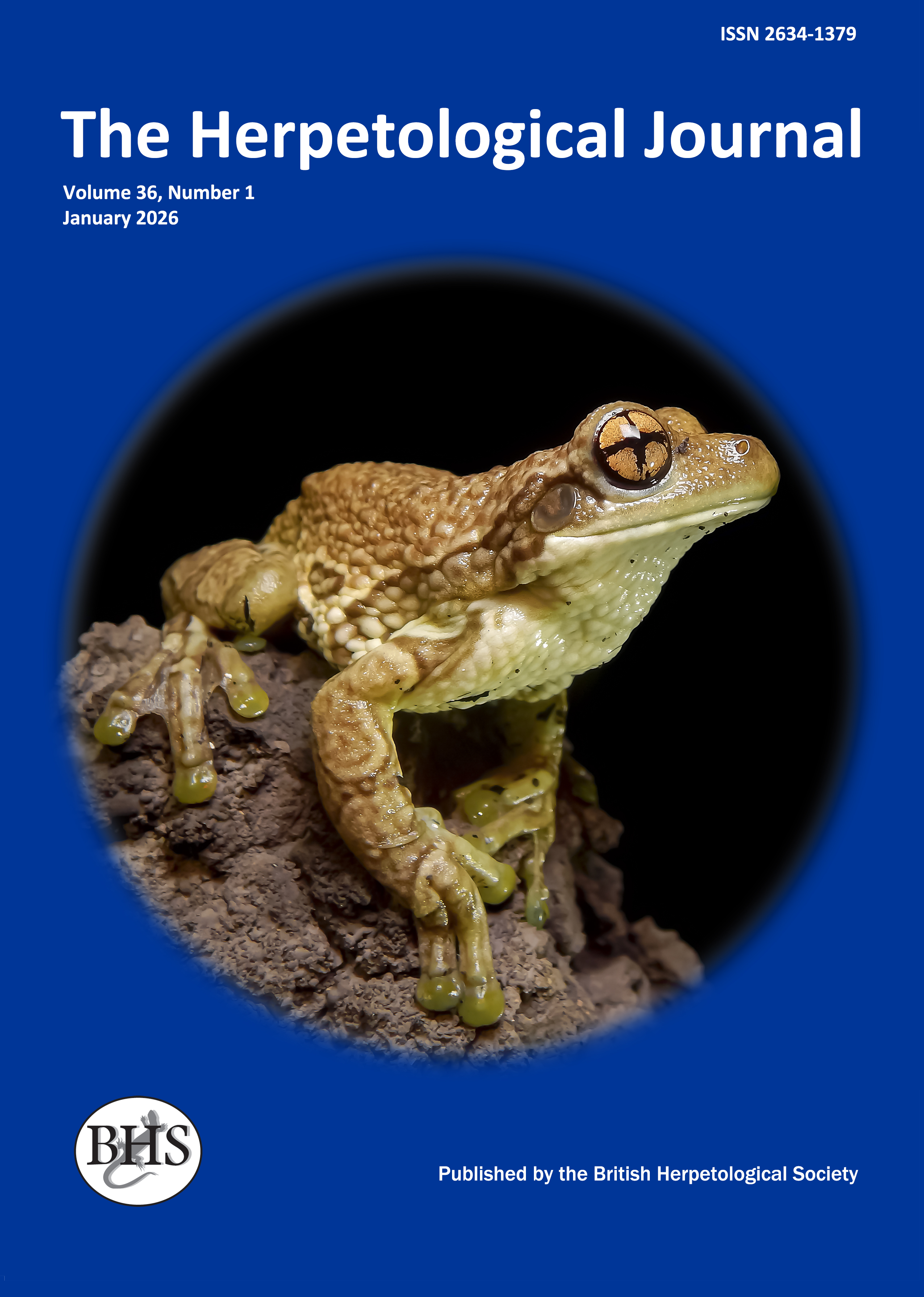
The Herpetological Journal
The Herpetological Journal is the Society's prestigious quarterly scientific journal. Articles are listed in Biological Abstracts, Current Awareness in Biological Sciences,Current Contents, Science Citation Index, and Zoological Record.
ISSN 0268-0130
2023 Impact Factor for the Herpetological Journal is 1.1, with the Journal sitting just below Quartile 2 in Zoology, at percentile 46.9
pdf 03. Long term decline and potential for recovery in a small, isolated population of natterjack toads Bufo calamita
1417 downloads
Open Access
pp.119-124
Authors: L. Vincent Fleming , Barbara Mearns And David Race
Abstract: Changes through time in a small, isolated population of natterjack toads on the Solway Firth are reported. The area and linear length of coastline occupied by the colony have declined since it was first described in 1849. The colony now occupies less than 20% of its former range. The rate of decline has increased since the 1960s and has continued into the present decade. This decline has been accompanied by losses of breeding pools and habitat which can be directly attributed to anthropogenic changes in land-use. Comparison of aerial photographs between 1 946 and 1 988 show, amongst other changes, a major loss (>60%) of coastal sandy grassland, favoured by natterjacks, to agricultural intensification and to the recreational development which now surrounds the colony. Recent population monitoring ( 1 986-1 995) shows a failure of recruitment in five of the six years before 1991. During this period the annual peak counts fluctuated between nine and thirty adult males, well below a previous estimate in 1976 of 100 males. Artificial excavation of breeding pools in 1991 resulted in the subsequent production annually of large numbers of toad lets. A peak count of 79 males in 1 995 probably reflects the recruitment to the breeding population of these cohorts and gives the first indication of recovery in this population. Re-occupation of the former range is no longer possible. The expansion of the colony to areas of suitable habitat away from the native site, but with no previous records of natterjacks, is discussed.

